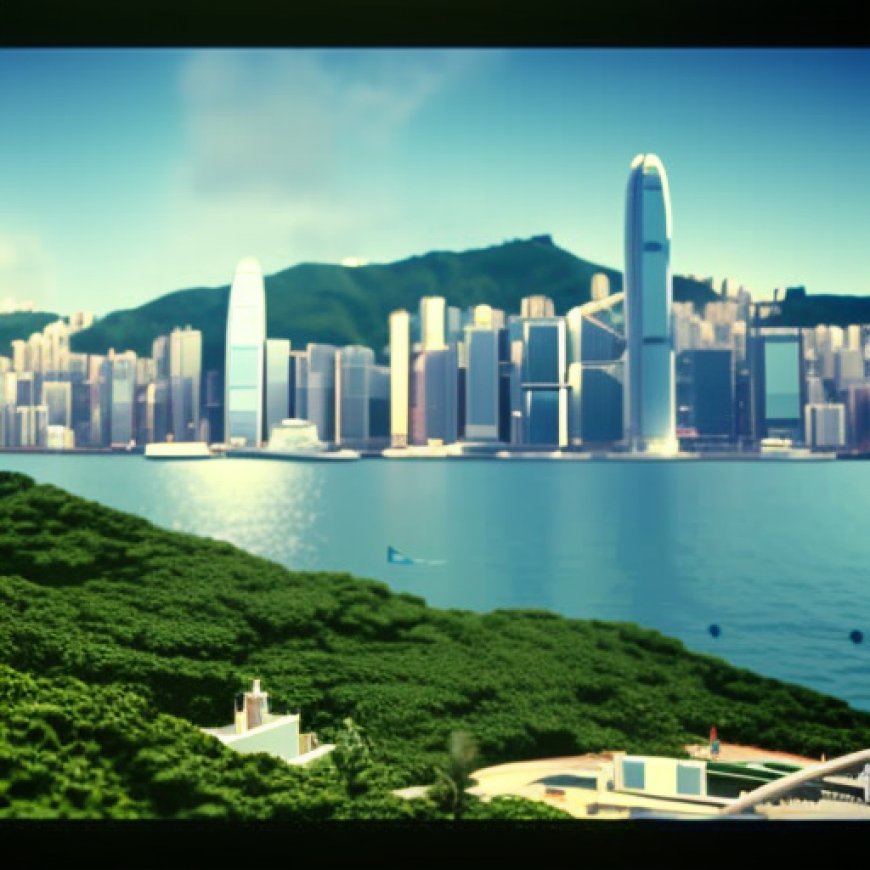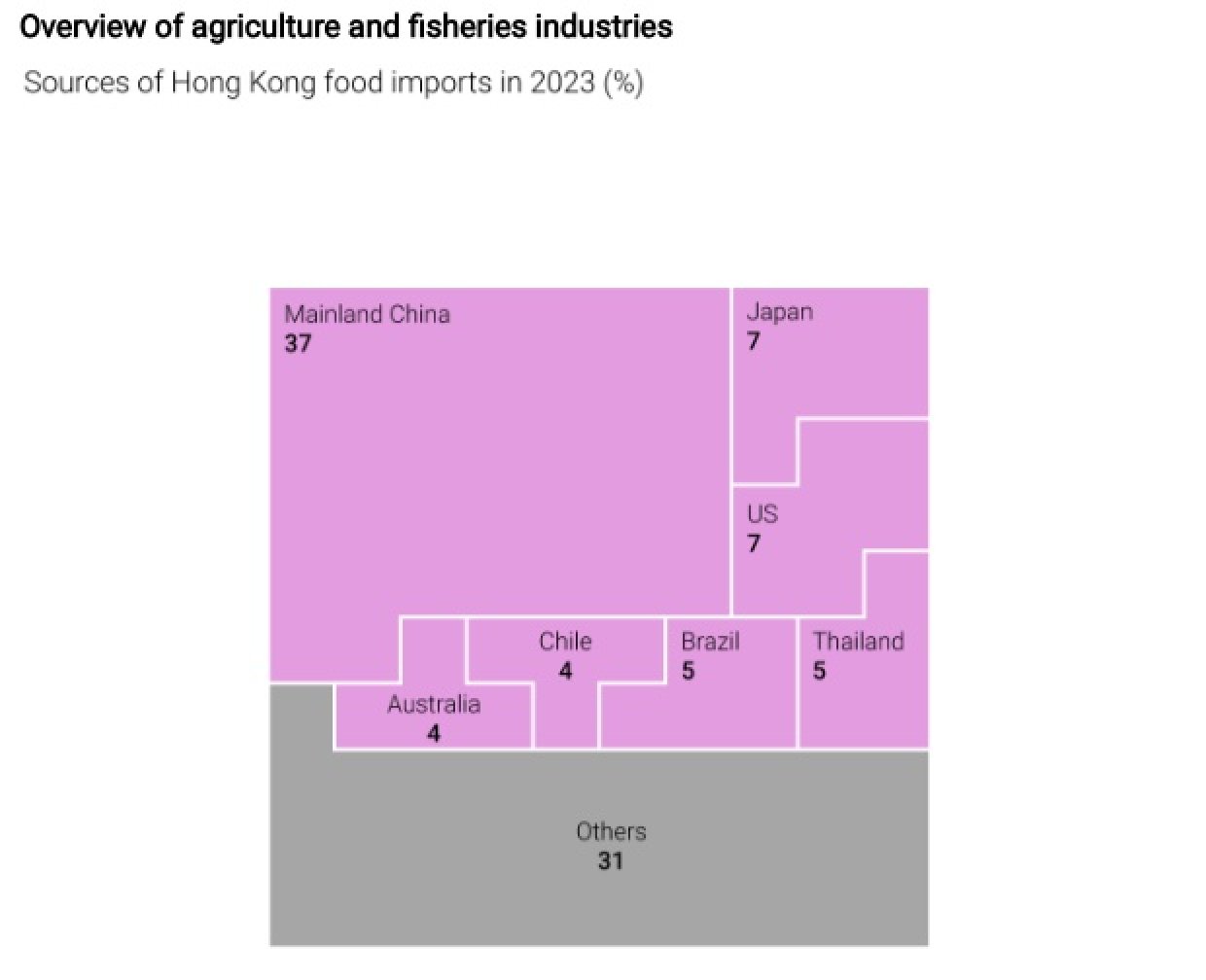Deep Dive: Hong Kong lays out blueprint for agriculture and fisheries industries
Deep Dive: Hong Kong lays out blueprint for agriculture and fisheries industries YP



Deep Dive: Hong Kong’s Plans for Agriculture and Fisheries
Deep Dive delves into hot issues in Hong Kong and mainland China. Our easy-to-read articles provide context to grasp what’s happening, while our questions help you craft informed responses. Check sample answers at the end of the page.
News: Hong Kong has big plans for agriculture and fisheries, but farming is still viewed as a sunset industry
From his floating farm off the coast of Hong Kong’s Sai Kung peninsula, Alex Lam Tsz-fung produces 200,000 fish each year for the city’s dining tables.
By experimenting with ways to reduce bacteria and increase the oxygen level in the water, he has increased the survival rate of his fish fry. Mixing traditional Chinese herbs into the feed also helped boost their immune systems.
His 20,000 sq ft farm, Hong Kong Aquaculture, produces five types of fish popular with residents – cobia, sea bass, pompano, spinefoot and batfish.
Lam, 48, said his goal was to produce nutritious, locally-grown fish at affordable prices. He pledged to keep the cost of a frozen pompano at about HK$50.
The government aims to work with about 100 fish farms, including Lam’s, to increase the supply of fresh fish tenfold to 6,000 tonnes in the next 15 years.
That target was set by the Agriculture, Fisheries and Conservation Department last December when it unveiled Hong Kong’s first detailed plan to develop and diversify the city’s agriculture and fishery industries.
The Blueprint for the Sustainable Development of Agriculture and Fisheries aims to quadruple the city’s fish culture zones to 800 hectares (1,977 acres) and raise the production of farmed marine fish within 15 years.

1. Why does Alex Lam conduct experiments on his fish farm?
Alex Lam conducts experiments on his fish farm to reduce bacteria, increase oxygen levels in the water, and boost the immune systems of his fish fry.
2. Which of the following statements about the blueprint are false?
A. (1), (2) only
- (1) It aims to quadruple the city’s fish culture zones to 800 hectares and raise the production of farmed marine fish by 2039.
- (2) It proposes switching all livestock farms to multi-storey farms to increase annual production by 20 per cent.
- (3) It will introduce hi-tech farming methods to draw younger people to agriculture.
- (4) It will seek opportunities on the mainland for cheaper food imports.
3. List TWO measures the blueprint outlines for developing the agriculture and fishery industries and explain how they could boost local production.
The blueprint outlines measures such as improving infrastructure and providing resource support. Upgrading infrastructure with advanced technologies can help farmers and fishermen enhance their operations and reduce production costs. It can encourage innovation and efficiency, increasing local production. Meanwhile, providing resource support, such as training programmes, can educate farmers and fishery operators on modern farming and fishing techniques. By equipping them with up-to-date knowledge and skills, industry players can adopt more efficient and sustainable methods to boost food production. (accept other reasonable answers)
Chart

1. Identify ONE key statistic from the chart.
Mainland China was the biggest source of Hong Kong’s food imports in 2023, accounting for 37 per cent of the total imports. (accept other reasonable answers)
2. Based on your answer above and News, what might be the reason behind this statistic?
Hong Kong has limited food production capacity as the city’s limited agricultural land and manpower make it challenging to achieve self-sufficiency in food production. As a result, it relies heavily on nearby Mainland China for its food supply.
3. According to News and your own knowledge, name ONE benefit and ONE concern this statistic might bring to Hong Kong.
One benefit is the affordable food supply. Mainland China’s extensive agricultural production and comparatively lower production costs enable cost-effective food imports for Hong Kong, providing the city with a diverse range of products at affordable prices. One concern is the potential impact on the city’s food security. Relying heavily on food imports can leave Hong Kong vulnerable to supply chain disruptions. Any disruptions in transport, such as trade conflicts, natural disasters, or global pandemics, can have a significant impact on the availability and affordability of imported food in Hong Kong. (accept other reasonable answers)
Issue: The future of farming in Hong Kong still uncertain, experts say
- Industry players said government proposals did not address deep-seated issues in the agriculture sector
- Hong Kong universities have begun offering agriculture-related courses to draw in young people
Players and experts in the city’s agriculture industry say more concrete policies are needed to solve underlying issues in the sunset industry.
“The government must change the public perception of agricultural development,” said Steven Ho Chun-yin, a lawmaker for the agriculture and fisheries sector.
“The stereotype that agriculture is not profitable has existed for decades, and Hongkongers lack knowledge about the industry. Hong Kong is so small that people feel that agriculture has no future and that the land can be better used for real estate development
SDGs, Targets, and Indicators in the Article
| SDGs | Targets | Indicators |
|---|---|---|
| SDG 2: Zero Hunger | 2.3: By 2030, double the agricultural productivity and incomes of small-scale food producers, in particular women, indigenous peoples, family farmers, pastoralists, and fishers, including through secure and equal access to land, other productive resources and inputs, knowledge, financial services, markets, and opportunities for value addition and non-farm employment | Not mentioned or implied in the article |
| SDG 8: Decent Work and Economic Growth | 8.3: Promote development-oriented policies that support productive activities, decent job creation, entrepreneurship, creativity, and innovation, and encourage the formalization and growth of micro-, small-, and medium-sized enterprises, including through access to financial services | Not mentioned or implied in the article |
| SDG 12: Responsible Consumption and Production | 12.3: By 2030, halve per capita global food waste at the retail and consumer levels and reduce food losses along production and supply chains, including post-harvest losses | Not mentioned or implied in the article |
| SDG 13: Climate Action | 13.1: Strengthen resilience and adaptive capacity to climate-related hazards and natural disasters in all countries | Not mentioned or implied in the article |
| SDG 15: Life on Land | 15.1: By 2020, ensure the conservation, restoration, and sustainable use of terrestrial and inland freshwater ecosystems and their services, in particular forests, wetlands, mountains, and drylands, in line with obligations under international agreements | Not mentioned or implied in the article |
1. Which SDGs are addressed or connected to the issues highlighted in the article?
The SDGs that are addressed or connected to the issues highlighted in the article are SDG 2: Zero Hunger, SDG 8: Decent Work and Economic Growth, SDG 12: Responsible Consumption and Production, SDG 13: Climate Action, and SDG 15: Life on Land.
2. What specific targets under those SDGs can be identified based on the article’s content?
Based on the article’s content, the specific targets that can be identified are:
– Target 2.3: By 2030, double the agricultural productivity and incomes of small-scale food producers.
– Target 8.3: Promote development-oriented policies that support productive activities, decent job creation, entrepreneurship, creativity, and innovation.
– Target 12.3: By 2030, halve per capita global food waste at the retail and consumer levels and reduce food losses along production and supply chains.
– Target 13.1: Strengthen resilience and adaptive capacity to climate-related hazards and natural disasters in all countries.
– Target 15.1: By 2020, ensure the conservation, restoration, and sustainable use of terrestrial and inland freshwater ecosystems and their services.
3. Are there any indicators mentioned or implied in the article that can be used to measure progress towards the identified targets?
No, there are no indicators mentioned or implied in the article that can be used to measure progress towards the identified targets.
SDGs, Targets, and Indicators Table
| SDGs | Targets | Indicators |
|---|---|---|
| SDG 2: Zero Hunger | 2.3: By 2030, double the agricultural productivity and incomes of small-scale food producers, in particular women, indigenous peoples, family farmers, pastoralists, and fishers, including through secure and equal access to land, other productive resources and inputs, knowledge, financial services, markets, and opportunities for value addition and non-farm employment | Not mentioned or implied in the article |
| SDG 8: Decent Work and Economic Growth | 8.3: Promote development-oriented policies that support productive activities, decent job creation, entrepreneurship, creativity, and innovation, and encourage the formalization and growth of micro-, small-, and medium-sized enterprises, including through access to financial services | Not mentioned or implied in the article |
| SDG 12: Responsible Consumption and Production | 12.3: By 2030, halve per capita global food waste at the retail and consumer levels and reduce food losses along production and supply chains, including post-harvest losses | Not mentioned or implied in the article |
| SDG 13: Climate Action | 13.1: Strengthen resilience and adaptive capacity to climate-related hazards and natural disasters in all countries | Not mentioned or implied in the article |
| SDG 15: Life on Land | 15.1: By 2020, ensure the conservation, restoration, and sustainable use of terrestrial and inland freshwater ecosystems and their services, in particular forests, wetlands, mountains, and drylands, in line with obligations under international agreements | Not mentioned or implied in the article |
Copyright: Dive into this article, curated with care by SDG Investors Inc. Our advanced AI technology searches through vast amounts of data to spotlight how we are all moving forward with the Sustainable Development Goals. While we own the rights to this content, we invite you to share it to help spread knowledge and spark action on the SDGs.
Fuente: scmp.com

Join us, as fellow seekers of change, on a transformative journey at https://sdgtalks.ai/welcome, where you can become a member and actively contribute to shaping a brighter future.







